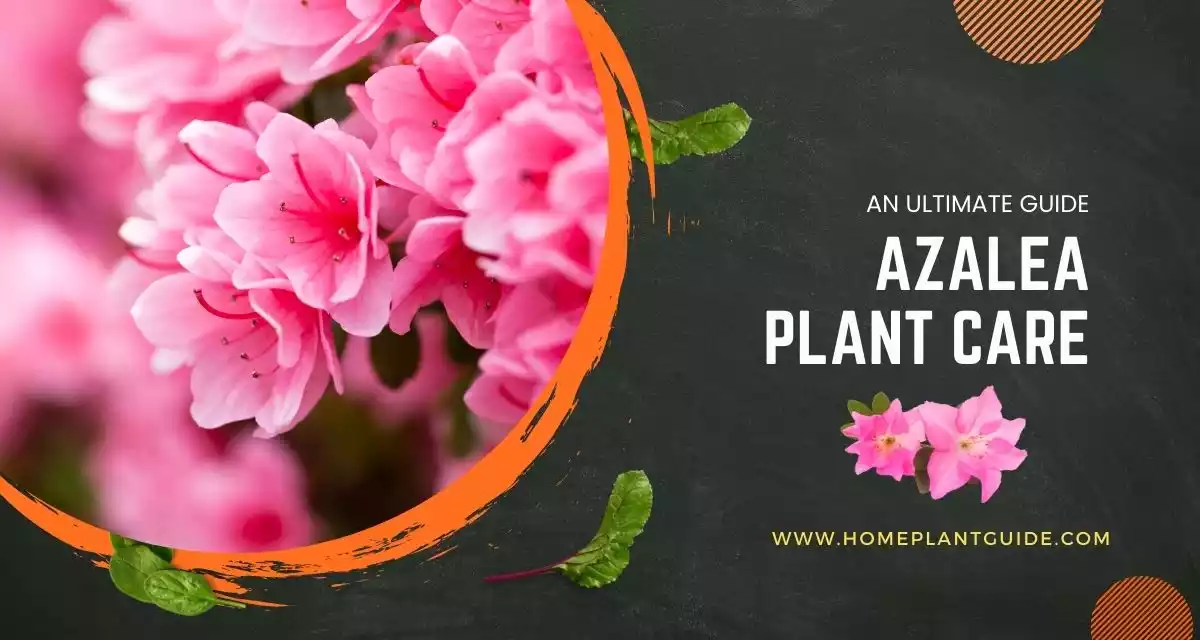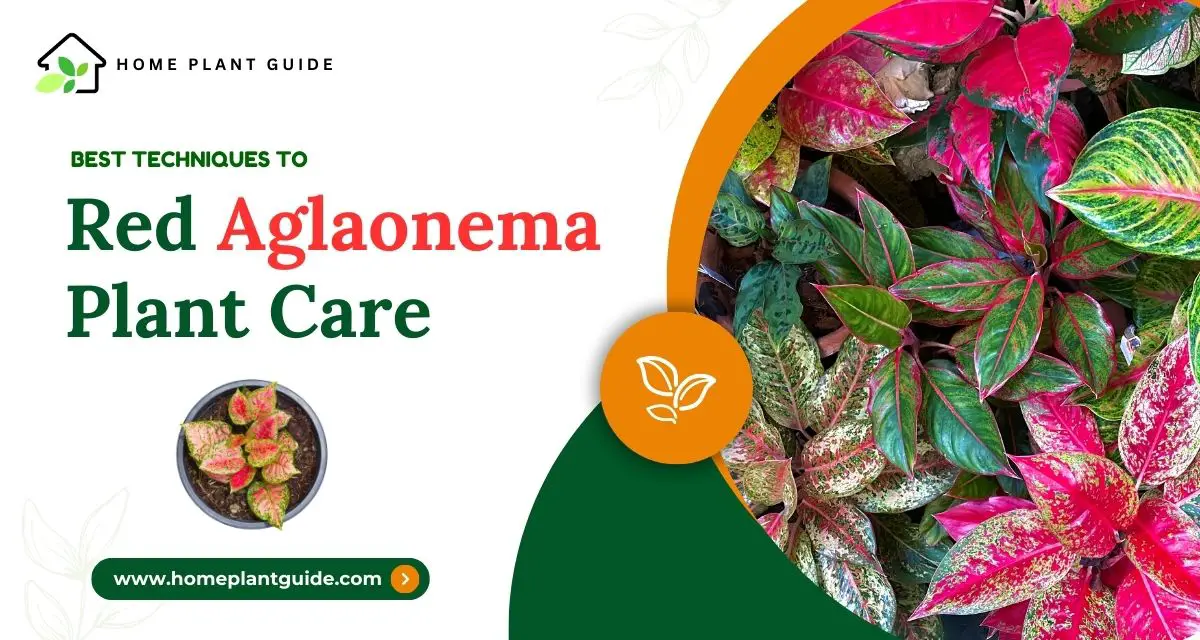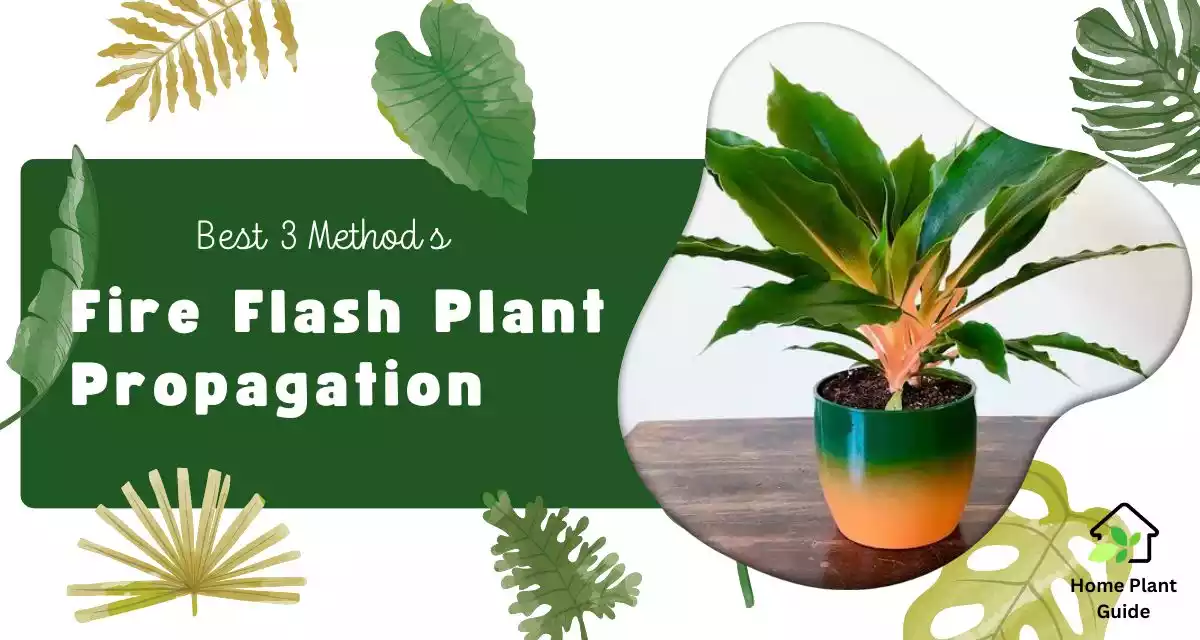Lady palm, also known as bamboo palm. The scientific name of this plant is Rhapis excelsa and its native to Southeast Asia. It is a popular indoor foliage plant that thrives well in low light conditions, making it ideal for homes and offices.
Lady’s palm has elegant arching leaves resembling lace fans on thin, upright stems clustered around a short, woodlike trunk palm. Mature plants may grow 5-10 feet tall indoors but can be pruned shorter.
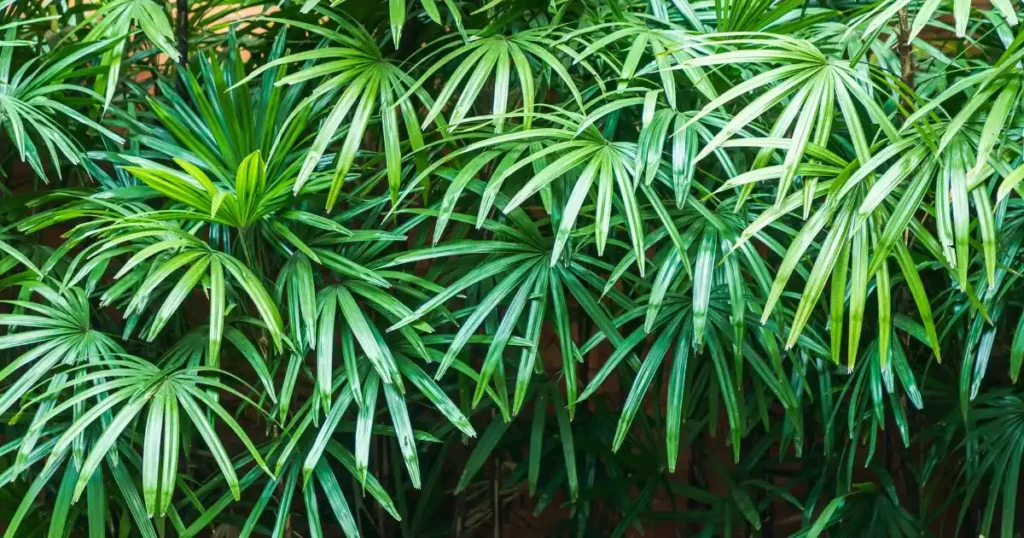
Lady Palms are famous for modern interiors and fit in well with minimalist decor styles. Their architectural aesthetic accompanies contemporary as well as traditional settings with elegance.
Let’s learn more about its important specifications, care requirements, and propagation.
In This Article
Specification of Lady Palm
These are the important specifications of this plant.
| General Name | Lady palm, bamboo palm, miniature fan palm |
| Scientific Name | Rhapis excelsa |
| Plant Family | Arecaceae |
| Type of Plant | Shrub |
| Mature Size | 6–15 ft. tall and wide (outdoors), up to 6 ft. tall, 4 ft. wide (indoors) |
| Flower color | Yellow |
| Sun Exposure | Partial, shade |
| Type of Soil | Loamy, well-drained |
| Soil pH Value | Acidic, neutral |
| Native Area | China |
| Hardiness Zones | 9–11 (USDA) |
| Toxicity | Non-toxic to both humans and pets |
| Bloom Time | Spring |
How to Care for Lady Palm
This hardy plant requires little care and is generally pest and disease-free. Its refined looks add a tropical flair to any room
Water
Lady palms need consistent moisture but not soggy soil. Water when the top inch of soil dries out, and use lukewarm filtered or rainwater.
Light
Provide indirect, bright filtered light. It tolerates low light but may lose lower leaves in deep shade.
Temperature
Prefers warmth between 65-80°F. Tolerates brief dips to 50°F.
Humidity
Mist leaves as they like humid conditions of 50-60%. Use pebble trays or a humidifier.
Soil
Well-draining, porous potting mix suitable for foliage plants. Replace every 2-3 years.
Fertilizer
Apply liquid fertilizer weekly in spring and summer. Use an all-purpose fertilizer diluted to half the strength.
Report
Transplant to a slightly larger pot every 2-3 years in early spring when new growth starts.
Pruning
Remove yellow or brown fronds to keep the plant neat. Try to trim stems periodically to control height.
How to Propagate Lady Palm
Lady palms can be propagated through both seeds and offsets. Seeds germinate readily but take 1-2 years to bloom. Balances or plantlets that emerge from the base are more accessible to grow.
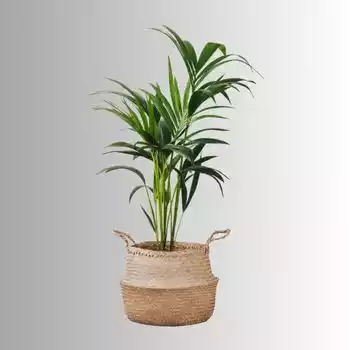
Seed propagation
Sow fresh seeds in spring in seed starting mix under mist. Germination occurs in 1-3 months.
Offset propagation
- Carefully separate offsets/side shoots from the mother plant.
- Let cut end callous over before potting.
- Moisten potting mix and place cuts 4 inches deep.
- Maintain warm 70-80°F temperatures and indirect light.
- Roots form in 4-6 weeks—pot individually when a few inches tall.
Division
More mature palms can also be divided. Carefully tease apart large fans growing in clusters at the soil line.
Lady Palm Brown Tips
Browning frond tips are shared in lady palms caused by dry air, over or under-watering, or mineral deficiencies.
Low humidity
Place pebble trays or mist leaves often to increase indoor humidity above 50%.
Soil moisture
Check if the soil is moist or dry. Water thoroughly if dry, but avoid soggy wet roots.
Mineral deficiency
Brown tips could indicate a lack of essential minerals like iron. Apply diluted liquid fertilizer or supplement with chelated iron.
Overwatering
- Soggy soil can cause root rot, causing leaf tips to brown. Improve drainage and allow topsoil to dry between waterings.
- In severe cases, prune away affected fronds to above the brown section. Move the plant to a humidifier-equipped area for prevention.
Read More Healthy Plantation:
Broadleaf Lady Palm
The botanical name for the broadleaf lady palm is Rhapis excelsa, ‘Malayan Giant.’ It differs from the regular Rhapis excelsa by having broader, arching fan-shaped leaves measuring 12-20 inches across robust stems.
Unlike regular slender trunked lady palms, mature broadleaf specimens develop a thick woody trunk. They eventually form an impressive multi-stemmed bushy fountain shape perfect for adding drama to large indoor landscapes.

Broadleaf lady palms need similar growing conditions but prefer slightly brighter light and tolerate more direct sun exposure than regular types.
They are generally hardier and grow faster, making a bold statement. Cuttings from established broadleaf palms readily produce new plantlets.
Variegated Lady Palm
Variegated lady palms (Rhapis excelsa ‘Variegata’) feature beautiful cream or yellow patterns on their dark green leaves. The mottled markings add visual interest to this subtly striking plant.
Variegated fronds need slightly brighter locations than their solid green cousins, as their pale sections are more prone to burn in excess sun.
Otherwise, their care demands remain consistent moisture, good drainage, and humidity.
This cultivar maintains the upright, graceful form of regular lady palms. However, variegation is unstable and can revert to solid green on some stems. Cuttings from reliably patterned areas ensure the rainbow continues to the next generation.
Lady palm variegata makes for an exquisite foliage accent, brightening interiors with its elegant dappled leaves.
Their appearance adds depth to decor schemes from modern to traditional styles.
Is Lady Palm Toxic to Cats?
Most plants can be potentially harmful if ingested by pets. Lady palm is generally considered non-toxic to cats, but some tender new fronds may cause mild stomach upset if nibbled on.

However, a few points to note:
- The woody trunk and stems are not palatable for cats to chew or ingest in large amounts.
- Mature hardened fronds are unlikely to be eaten, but young soft fronds may be tempting.
- Keep lady palms out of reach of curious kitties or behind cat-proof barriers for safety.
- Monitor kitty behavior around plants and contact the vet immediately in case of changes like vomiting.
- As with all houseplants, prevent cats from having access to soil containing fertilizers or indoor potting mixes.
With responsible precautions, ladypalms can live safely alongside cats indoors, presenting minimal risks. Attention should be paid to deterring plant munching or play.
Conclusion
Lady palms make excellent low-maintenance indoor foliage plants for homes and offices. Their architectural form, lush tropical foliage, and ease of care have cemented their popularity as one of the top picks for modern interiors worldwide.
With a proper understanding of their needs and routine maintenance, these graceful palms flourish beautifully as integral accents complementing diverse interior decor styles.
The propagation from seeds or offsets, their architectural charm can also be enjoyed across generations.
FAQ:
Q: Can lady palms be grown outside in mild climates?
Lady palms can be grown outdoors year-round in zones 9-11, where temperatures stay above 50°F. In colder zones, grow as a potted plant to be brought indoors before the first frost.
Q: How do I get rid of mealybugs on my lady’s palm?
First, you need to Isolate the plant. Wipe leaves with cotton dipped in alcohol to kill bugs.
Spray infested areas with neem oil or insecticidal soap weekly till clear. Improve air circulation and monitor for recurrence.
Q: Can I prune back my tall lady’s palm?
Yes, you can prune back your tall lady’s palm plant. However, you should only remove brown, yellow, or damaged leaves.
Here are some tips for pruning a lady’s palm:
a) Use sharp, sterilized pruning shears.
b) Cut at a 45-degree angle just above the base of the leaf.
c) Avoid cutting into the healthy green tissue of the plant.
d) If you are removing a large number of leaves, do so over a period of time to avoid shocking the plant.
Q: How long do lady palms live?
Lady palms can live up to 20-30 years when grown as houseplants indoors under suitable care. Outdoors, they may reach 50 years of age. Proper maintenance ensures a longer life.
Q: Can brown frond tips be cured once they appear?
Once frond tips turn brown, they will not regrow green again.
Regularly pruning off affected areas above browning is recommended for aesthetics and to prevent disease spread.
Addressing the underlying cause prevents the recurrence.
Q: Can terracotta pots be used for lady palms?
Yes, terracotta pots can be used for lady palms. However, terracotta pots are porous and can dry out quickly. so you will need to water your lady palm more often if it is planted in a terracotta pot.
You should also make sure that the pot has a drainage hole so that excess water can escape.
Read More Easy Indoor Plantation:
